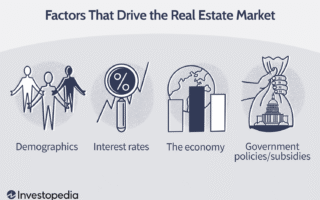Real Estate Market Trends 2025: Key Regions, Property Types, and Price Highlights

Introduction
Real estate market trends 2025 are attracting unprecedented attention from investors, economists, and people looking for opportunities to own a home or generate steady returns. Amid global economic fluctuations, Vietnam and its major cities continue to stand out thanks to rapid urbanization, improved infrastructure, and supportive policies. This article dives into three key pillars shaping the market in 2025: prominent regions, popular property types, and expected price movements. It’s designed to give readers a comprehensive and up-to-date view of where the market is heading.
Prominent Regions in the 2025 Real Estate Market
Hanoi and Surrounding Areas
Hanoi remains the leading hub of the northern real estate market. Massive infrastructure projects—ring roads, metro lines, and expanded bridges—are pushing urban development east and north. Districts such as Gia Lam, Dong Anh, and Soc Son are transforming into hotspots. Real estate market trends 2025 here will center on satellite towns, with major developers rolling out a diverse range of products from mid-range apartments to luxury condominiums.
Ho Chi Minh City and Neighboring Provinces
In the south, Ho Chi Minh City maintains its role as Vietnam’s economic capital, but nearby provinces like Binh Duong, Dong Nai, and Long An are stealing the spotlight. Interprovincial highways, especially the Ben Luc–Long Thanh expressway and the upcoming Long Thanh International Airport, are channeling capital into these areas. The standout trend is integrated industrial-service urban development, creating huge potential for worker housing, rental apartments, and land plots near industrial parks.
Emerging Tourist Cities and New Urban Areas
Destinations such as Da Nang, Nha Trang, Phu Quoc, Quy Nhon, Thanh Hoa, and Quang Ninh are witnessing a tourism boom. This surge drives demand for vacation properties and shophouses catering to tourists. In the context of real estate market trends 2025, these localities attract not only domestic investors but also foreign funds seeking long-term yields from international visitors.
Popular Property Types in 2025
Apartments Across Multiple Segments
Urban population growth and limited land supply ensure apartments remain the most in-demand housing option. In 2025, green design, integrated smart amenities, and ESG (Environmental, Social, and Governance) standards will be the new competitive edge. Beyond high-end condos, mid-income apartments, social housing, and long-term rentals are expected to surge.
Townhouses, Shophouses, and Clustered Villas
Master-planned urban areas on the outskirts are fueling the development of shophouses and semi-detached villas. These products are ideal for both living and running a business, especially in fast-growing neighborhoods. For investors, they offer stable returns through commercial leases or service operations.
Industrial Real Estate
Vietnam continues to benefit from the global supply chain shift. By 2025, expanded industrial parks, smart logistics hubs, and modern warehouses will drive strong demand for industrial land and ready-built factories. This is a relatively new but promising segment for long-term investors.
Vacation Properties and Second Homes
Post-pandemic lifestyle changes have reshaped travel and leisure. Vietnamese buyers increasingly favor a “second home” in seaside or mountainous destinations. Combining investment with personal enjoyment, this trend will strengthen in 2025. Projects with clear legal standing, professional operations, and guaranteed returns will have the greatest pull.
Housing Prices in 2025: Key Highlights
Factors Influencing Prices
Three major factors will shape property prices in 2025:
– New transportation infrastructure (metro lines, expressways, airports).
– Credit policies and interest rates.
– Inflows of foreign direct investment, especially in industrial and tourism sectors.
Additionally, the application of digital technology to property management and transactions improves transparency, helping stabilize prices.
Price Forecasts by Region
In Hanoi, mid-range apartment prices are projected to rise moderately by 5–8% due to tight supply and steady demand. In Ho Chi Minh City, high-end condos may adjust slightly, but affordable housing and rental properties are expected to hold steady or inch upward. Satellite provinces with industrial growth could see a 10–15% increase as infrastructure completes. In tourist areas, vacation property prices will become highly segmented: projects with solid legal status and branded management will appreciate, while lower-quality developments may stagnate.
Opportunities for Investors
2025 marks a shift from “quick flips” to “value investing.” Investors should focus on location, legal clarity, and long-term utility rather than short-term price jumps. Rental apartments, worker housing, warehouses, and second homes in tourism hubs may represent “golden opportunities” for the next stage of growth.
Consumer Behavior and Technology Trends in Real Estate 2025
Online Transactions and PropTech
PropTech (property technology) is making it easier to search, compare, sign contracts, and make payments online. Blockchain, smart contracts, virtual reality (VR), and artificial intelligence (AI) are transforming the home-buying experience. According to real estate market trends 2025, younger buyers want to tour homes via VR and analyze price data with AI before making decisions.
Green and Sustainable Living
Buyers increasingly prioritize quality of life, green spaces, energy efficiency, and sustainable communities. This trend pushes developers to incorporate green building standards, eco-friendly materials, and community-oriented amenities into their projects.
Flexible Financing
Preferential loan packages, installment plans, and bank-developer partnerships make homeownership more accessible. This factor is especially critical for young buyers and new families, and will strongly influence demand in 2025.
Practical Advice for Buyers and Investors
For End-Users
Clarify your needs and prioritize locations with complete or rapidly developing infrastructure. Check project legality and long-term affordability. Avoid chasing speculative rumors and instead focus on livability and community value.
For Investors
Diversify your portfolio by mixing rental apartments, industrial real estate, and second homes to reduce risk. Study developers, legal documents, zoning plans, and demographic trends carefully before making commitments.
New Dimensions Shaping Real Estate Market Trends 2025
Government Regulations and Policy Shifts
A major factor shaping real estate market trends 2025 is the shift in government policy and regulatory frameworks. Vietnam’s new land law amendments and upcoming property tax proposals are set to create a more transparent, competitive environment. This includes clearer criteria for land auctions, more stringent environmental assessments, and incentives for affordable housing. These changes will attract institutional investors while protecting consumers from speculative bubbles.
In addition, the government’s push for digitized land records and e-notarization will drastically cut red tape, making transactions faster and safer. For foreign buyers, relaxed ownership rules for certain property types in special economic zones could open fresh opportunities.
Cross-Border Investment Flows
Another underexplored driver of real estate market trends 2025 is the flow of capital between countries. Vietnamese developers are not only receiving investment from Japan, Korea, and Singapore but also starting to invest abroad. Joint ventures bring advanced construction technology, sustainable designs, and global marketing strategies into local projects. For investors, this creates access to more professional, internationally benchmarked developments.
Meanwhile, outbound Vietnamese investment into neighboring markets such as Cambodia or Laos is also growing, offering diversification for seasoned players.
Demographic and Lifestyle Transformations
The shifting age profile of Vietnam’s population also influences demand. A rising middle class with higher disposable income wants urban conveniences but also weekend escapes. Gen Z homebuyers, who grew up with smartphones, expect seamless digital experiences and co-living or co-working options in their buildings.
Simultaneously, an aging population is generating demand for senior-friendly housing and integrated healthcare facilities—an emerging niche in real estate market trends 2025 that developers are only beginning to tap. Projects combining residential, wellness, and medical services could see rapid growth.
The Rise of Mixed-Use “All-in-One” Complexes
While traditional residential projects focus on housing, new mixed-use developments offer shopping, offices, entertainment, education, and healthcare in one destination. In 2025, such “all-in-one” complexes are set to dominate both big cities and satellite towns. They respond to a post-pandemic preference for minimizing travel while maintaining lifestyle quality.
This creates fresh opportunities for retail real estate and small businesses operating inside these complexes—especially in food, fitness, and personal services. Investors who buy early retail units in well-planned mixed-use projects may enjoy premium rents as foot traffic grows.
Climate Risk and Resilient Construction
Another angle rarely discussed but increasingly critical in real estate market trends 2025 is climate risk. Flooding, heat waves, and rising sea levels are prompting developers to adopt resilient construction techniques. Elevated foundations, improved drainage, and weather-resistant materials are becoming selling points, particularly in coastal cities.
Insurance and risk assessment services tied to climate resilience will also emerge as a niche sector. For investors, evaluating a project’s climate readiness will be as important as its location.
Technology-Driven Valuation and Market Transparency
PropTech 1.0 focused on online listings; PropTech 2.0 brings AI-driven valuation models, blockchain-based title verification, and predictive analytics. By 2025, these tools will allow investors to benchmark prices, forecast rental yields, and assess neighborhood growth potential more accurately.
This greater transparency reduces speculation and empowers data-driven decision making. Smaller investors can access the same insights as big institutions, leveling the playing field.
Short-Term Rental Regulations and New Hospitality Formats
As tourism rebounds, short-term rentals and hybrid hospitality formats (co-living + co-working + serviced apartments) are reshaping city centers. In 2025, local governments are expected to implement clearer rules for licensing and taxation of short-term rentals. While this may limit informal operators, it creates a more stable environment for professional investors and branded operators.
Developers who incorporate flexible rental programs into their projects—such as guaranteed occupancy or centralized management—will attract both end-users and investors looking for turnkey solutions.
Financial Innovation and Tokenized Real Estate
One of the boldest frontiers in real estate market trends 2025 is tokenization—the ability to own fractional shares of a property through blockchain. This model allows small investors to participate in high-value projects such as Grade A office towers or luxury resorts without needing full capital.
If Vietnam’s regulatory environment adapts, tokenized real estate could democratize investment, increase liquidity, and bring in a new generation of tech-savvy buyers. This trend also intersects with the rise of fintech and digital wallets, streamlining cross-border payments for property purchases.
Rural and Agricultural Land Transformation
Beyond cities and resorts, agricultural and rural land is entering the spotlight. As food security, renewable energy, and eco-tourism gain importance, investors are looking at farmland for integrated developments: organic farms, farm-stay resorts, or solar parks. These alternative asset classes diversify portfolios and support sustainable development goals.
The conversion of rural land for industrial or logistic purposes also generates opportunities—but requires careful due diligence on zoning and community impact.
The Human Touch: Community-Building and Social Impact
Finally, real estate market trends 2025 are not just about bricks and mortar but also about building communities. Developers who invest in social infrastructure—schools, parks, cultural spaces—foster loyalty and long-term value. ESG-minded investors increasingly screen projects for social impact alongside financial returns.
This shift means marketing will also evolve. Instead of just highlighting square footage or luxury finishes, successful campaigns in 2025 will emphasize belonging, wellness, and shared experiences.
Key Takeaway
These new angles—policy shifts, cross-border capital, demographic changes, mixed-use complexes, climate resilience, advanced PropTech, tokenization, rural land transformation, and community-building—add fresh layers to real estate market trends 2025 beyond location, property type, and pricing.
For investors and homebuyers alike, understanding these less obvious forces can reveal hidden opportunities and reduce risks. The winners of the next market cycle will be those who combine data, foresight, and empathy to create or select properties aligned with the evolving needs of society.
Fresh Perspectives on Real Estate Market Trends 2025
The Shift Toward Digital Identity and E-Governance
One of the quiet revolutions shaping real estate market trends 2025 is the use of national digital ID systems and e-governance platforms in property transactions. Buyers will soon be able to sign contracts, verify their credit history, and pay taxes entirely online with secure biometric verification. This eliminates intermediaries, cuts transaction costs, and speeds up transfer of ownership. For developers, integrating with these platforms can improve customer trust and compliance.
ESG Financing and Green Bonds for Developers
Financing is also undergoing a transformation. International lenders and local banks are launching “green bonds” and ESG-linked loans specifically for projects meeting environmental and social criteria. In 2025, developers who embrace energy-efficient designs and sustainable community planning will enjoy lower borrowing costs. This trend will spill over into consumer mortgages as well, rewarding buyers who choose certified green homes with preferential interest rates.
The Rise of Micro-Units and Flexible Floor Plans
As urban living costs climb, micro-apartments and modular floor plans are emerging as a creative response. These are not just small; they’re smart—using movable walls, fold-away furniture, and high-tech storage to maximize functionality. In real estate market trends 2025, such micro-units appeal to single professionals, digital nomads, and young couples who value location and amenities over square footage. Investors gain from higher rental yields per square meter.
Health and Wellness Integration in Residential Projects
Beyond gyms and pools, the next wave of wellness real estate includes in-building clinics, telehealth hubs, air-filtration systems, and mental-health spaces. Developers are marketing projects as “wellness communities” where residents can access holistic healthcare on site. This is a new competitive dimension in real estate market trends 2025 that goes beyond luxury toward genuine lifestyle enhancement.
Co-Ownership and Cooperative Housing Models
With prices rising, co-ownership models—where multiple unrelated buyers purchase shares of a single property—are gaining traction. In 2025, legal frameworks for cooperative housing and fractional vacation homes will become clearer. This opens the door for middle-income households to access prime locations they could not afford individually. Platforms facilitating these arrangements will be part of the broader PropTech ecosystem.
Impact of Remote Work 2.0
Remote work is evolving rather than disappearing. By 2025, many companies will adopt hybrid “hub-and-spoke” office networks. This affects real estate market trends 2025 in two ways: first, demand for suburban office hubs rises; second, homebuyers prioritize larger living spaces or dual-use rooms to accommodate work. Developers responding with soundproof home offices or shared coworking spaces within residential towers will stand out.
Cultural Heritage and Adaptive Reuse
Another overlooked opportunity is adaptive reuse—repurposing old factories, colonial houses, or heritage buildings into boutique hotels, creative offices, or co-living spaces. In 2025, municipalities will issue incentives for preserving cultural identity while meeting modern needs. This not only revitalizes neighborhoods but also creates unique, high-value properties with built-in storytelling appeal.
Data Centers and Digital Infrastructure Real Estate
As cloud computing and AI surge, data centers become an important asset class. Land and industrial spaces suitable for high-power, well-connected facilities will command premium valuations. Investors tracking real estate market trends 2025 should consider the intersection of real estate with digital infrastructure—from edge data centers to 5G tower sites. This is a niche but fast-growing segment with institutional demand.
Energy Transition and On-Site Power Generation
Projects that integrate renewable energy—solar rooftops, micro-grids, battery storage—offer lower operating costs and resilience against grid instability. By 2025, such features will shift from marketing gimmick to essential selling points. Industrial parks and large residential compounds may even generate surplus electricity to sell back to the grid, creating an additional revenue stream.
Education-Driven Micro-Markets
Finally, proximity to high-quality education remains one of the strongest price drivers. But in 2025, the picture broadens beyond schools to include innovation hubs, vocational training centers, and international universities opening satellite campuses. Entire micro-markets will form around these knowledge hubs, with mixed-use developments catering to students, faculty, and research staff. Savvy investors who identify these nodes early can capture outsized appreciation.
Closing Insight
These fresh angles—digital IDs, ESG financing, micro-units, wellness integration, co-ownership, remote work 2.0, adaptive reuse, data-center real estate, on-site energy, and education-driven micro-markets—represent the next layer of real estate market trends 2025 beyond the obvious headlines. They show how technology, finance, demographics, and sustainability are converging to reshape how properties are built, financed, owned, and experienced.
For readers, tuning into these under-the-radar trends can reveal the “early signals” of where value will emerge in the coming years, helping them position wisely for both personal and investment decisions.Conclusion and Call to Action
Real estate market trends 2025: Key regions, property types, and price highlights paint a multifaceted picture of opportunities and challenges. Synchronized infrastructure, real housing demand, and foreign capital will remain primary growth drivers. However, investors must shift their mindset toward long-term value, legal security, and project quality.
If you’re interested in a specific property segment or need tailored insights on the 2025 market, reach out to reputable professionals or agencies for expert support. Making the right decision today could deliver sustainable value for your future.
New Strategic Angles for Real Estate Market Trends 2025
One more underexplored dimension of real estate market trends 2025 is the emergence of “experience-driven” developments. Instead of focusing purely on square meters, developers are designing curated experiences for residents and visitors. Residential complexes that host farmers’ markets, art fairs, and cultural festivals create vibrant communities and long-term loyalty. In commercial spaces, curated tenant mixes and lifestyle programming increase foot traffic and support higher rents. This move toward placemaking shifts real estate from a product to an ongoing service.
Another fresh angle is the integration of mobility hubs into property planning. With electric vehicles (EVs), shared bikes, and autonomous shuttles becoming mainstream, projects that incorporate EV charging networks, bike-share docks, and “mobility-as-a-service” kiosks will attract forward-thinking buyers. These features transform parking lots from static assets into dynamic revenue streams.
In real estate market trends 2025, local supply chains and materials will also play a bigger role. The push for carbon reduction and faster construction timelines is encouraging developers to source building materials regionally and adopt modular construction. This reduces costs, enhances sustainability, and allows for quicker delivery—critical advantages in a competitive market.
Additionally, the rise of impact investing is creating funds that measure success by both financial return and social outcomes. These funds will prioritize projects that deliver affordable housing, community services, or climate resilience. For investors, aligning with impact funds opens doors to co-investment opportunities and a more diversified portfolio.
Finally, storytelling is becoming an essential marketing strategy. Buyers and tenants increasingly want to feel part of a narrative—whether it’s a community revitalization project, a green living initiative, or a heritage preservation story. In 2025, the most successful developers will be those who not only build well but also communicate a compelling purpose that resonates with modern values.
Urban Agriculture and Food Security
An emerging but little-discussed driver of real estate market trends 2025 is the integration of urban agriculture and food security into property planning. High-density cities are experimenting with rooftop farms, vertical gardens, and hydroponic systems built directly into residential towers and mixed-use complexes. These features reduce food miles, improve community health, and create a sense of self-sufficiency. For developers, they offer a differentiating amenity that appeals to environmentally conscious buyers and tenants.
At the same time, technology companies are partnering with real estate firms to manage these systems via smart sensors, AI-driven irrigation, and blockchain-verified supply chains. This combination of green space and food production transforms buildings into micro-ecosystems. It’s a fresh value proposition that extends beyond aesthetics to tangible cost savings and resilience.
As sustainability and local sourcing become mainstream consumer priorities, properties with built-in food production may command premium pricing and stronger long-term demand. In this way, urban agriculture is poised to become one of the quiet but powerful forces shaping real estate market trends 2025, blending lifestyle, sustainability, and community engagement in a way traditional amenities cannot.



